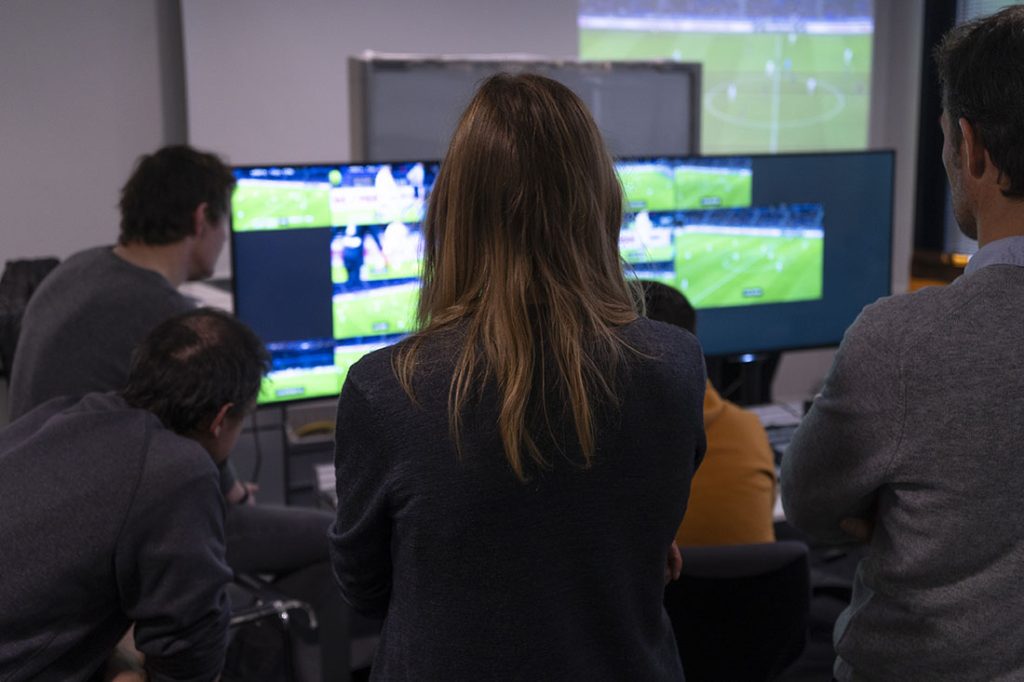The advent of 5G technology is poised to revolutionize the speed and quality of sports broadcasts, marking a significant leap from previous generations of wireless technology. This fifth-generation mobile network promises faster data transfer rates, reduced latency, and enhanced connectivity, all of which are crucial for the seamless delivery of live sports content. Firstly, the increased speed of 5G technology directly impacts the quality of sports broadcasts. With data transfer rates up to 100 times faster than 4G, 5G allows for the streaming of high-definition and even ultra-high-definition UHD content with minimal buffering. This means that viewers can enjoy crystal-clear images and videos, capturing every detail of the action on the field or court. The high-resolution feeds are particularly beneficial for sports with fast-paced action, such as soccer, basketball, or motorsports, where every millisecond can be crucial. The superior visual quality enhances the overall viewing experience, making it more immersive and engaging for fans. Moreover, 5G technology significantly reduces latency, which is the delay between capturing the live event and delivering it to the viewer.

Previous generations of mobile networks often struggled with latency issues, resulting in delays that could disrupt the viewing experience. With 5G, latency can be reduced to as low as one millisecond, ensuring that live sports broadcasts are delivered in near real-time. This low latency is particularly important for live sports betting and interactive features, where delays can affect the outcome of bets or viewer participation. The immediacy provided by 5G ensures that fans are always in sync with the live action, enhancing the excitement and engagement of watching sports. The enhanced connectivity of 5G also plays a pivotal role in improving sports broadcasts. The network’s ability to handle a massive number of connected devices simultaneously allows for more dynamic and interactive viewing experiences. For instance, 5G can support multiple camera angles, instant replays, and augmented reality AR features, providing viewers with a more comprehensive understanding of the game. Fans can switch between different perspectives, access detailed player statistics, and enjoy AR overlays that highlight key moments in the match. This level of interactivity transforms passive viewing into an active and personalized experience, catering to the preferences of individual viewers.
Additionally, 해외스포츠중계 to employ advanced technologies such as virtual reality VR and 360-degree video, offering an unprecedented level of immersion. Fans can experience the thrill of being at the stadium from the comfort of their homes, with VR headsets providing a front-row seat to the action. The high bandwidth and low latency of 5G are essential for delivering these data-intensive applications without compromising quality. This not only enhances the viewer experience but also opens up new revenue streams for broadcasters through innovative content offerings. In conclusion, the impact of 5G technology on the speed and quality of sports broadcasts is profound. By providing faster data transfer rates, reduced latency, and enhanced connectivity, 5G ensures that sports fans can enjoy high-definition, real-time, and interactive viewing experiences. As the technology continues to evolve, it will undoubtedly unlock new possibilities for sports broadcasting, setting a new standard for how fans consume and engage with their favorite sports. The integration of 5G into the broadcasting ecosystem marks a significant step forward, promising a future where the boundaries between the live event and the viewer’s experience are increasingly blurred.